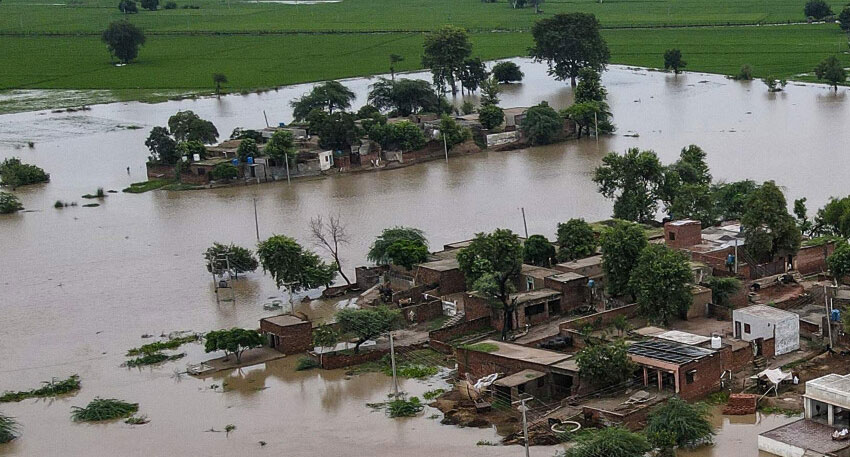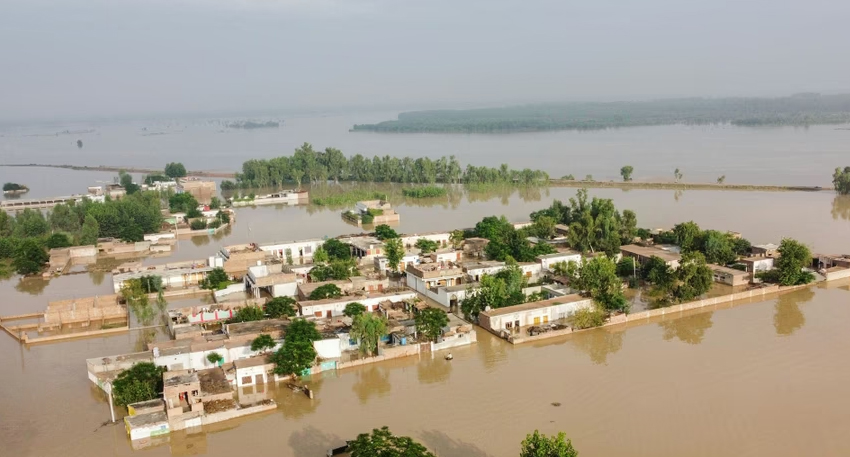
Pakistan is grappling with one of its worst monsoon disasters in recent history.
From late June through August 2025, torrential rains and deadly flash floods swept across the nation, leaving a trail of destruction, the death toll has surpassed 800, thousands have been displaced, and millions are facing unimaginable hardship.
Rising Waters, Mounting Tragedies:
According to Pakistan’s National Disaster Management Authority (NDMA), the historic monsoon has claimed at least 802 lives since June 26, with 1,088 people injured.
In Khyber Pakhtunkhwa (KP), the number of fatalities is astounding. The financial burden fell on districts like Buner and Swat, where powerful cloudbursts and flash flooding caught people off guard and resulted in over 200 fatalities in Buner alone.
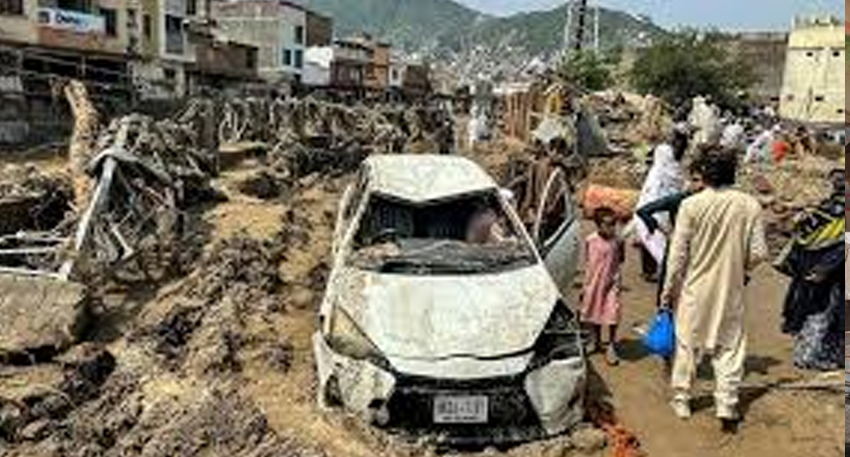
Horror stories of uprooted families, roofs as the only safe haven, and overworked emergency personnel soon spread.
An embarrassing example is a wedding in Buner that was supposed to be a celebration, but ended in 24 funerals.
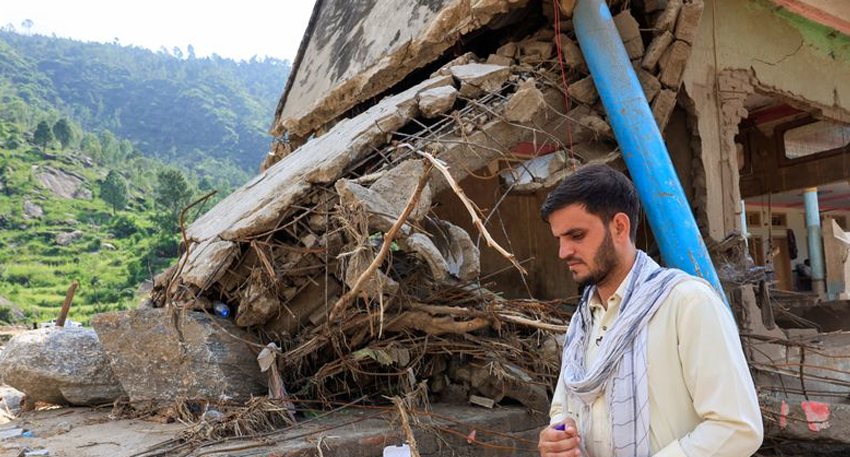
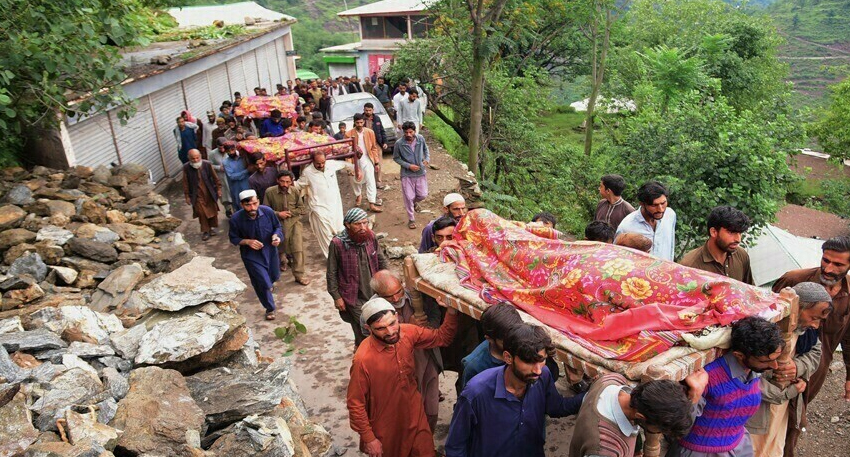
In Punjab and Sindh, Infrastructure and farms were destroyed by floods. Rainfall of 163.5 mm in a single day in Karachi set a record, swamped drainage systems, killed at least ten people, and paralyzed the city.

Pakistan’s largest city, Karachi, was paralyzed after recording 163.5 mm of rain in a single day, overwhelming its fragile drainage system.
Major roads turned into rivers, stranding vehicles and commuters, while neighborhoods like PECHS, Gulshan-e-Iqbal, and Saddar were submerged.
.jpg)
At least ten individuals died, many of them from electrocution and falling structures.
Large areas of the city were left in complete darkness due to power failures, and hospitals reported an increase in waterborne illness cases.
Frustrated locals blamed civic authorities for failing to prepare, as Karachi once again displayed its inadequate infrastructure and vulnerability to even a single strong rain.
In Narowal, floodwaters from the Ravi River breached embankments near Kartarpur, submerging villages, farmland, and the Kartarpur Sahib Gurdwara.
.jpg)
The Narowal–Shakargarh Road was closed, cutting off communities as areas like Bhiku Chak, Naushera, and Naugaza went underwater.
Thousands were displaced, and fears of lasting agricultural damage grew as relief efforts struggled against strong currents.
Evacuations and Rising Rhetoric:
Cross-border dynamics made the natural disaster worse. Up to 167,000 people in Punjab had to be evacuated right away when India released 200,000 cusecs of dam water into rivers that are shared with Pakistan.
Authority for National Disaster Management stated, more than 100,000 people were evacuated from Punjab s border regions, according to earlier statistics.
Reference for this statement is here:

Disaster Response: On the Ground:
Pakistan’s NDMA, armed forces, and provincial disaster agencies launched rescue operations, deploying helicopters, boats, and emergency teams.
However, critics argue that the response has been reactive and poorly coordinated, focused on aftermath rescue rather than disaster prevention.
In many rural and mountainous areas, relief has been slow.
Funding is also a sticking point, while the UN has pledged $600,000 in emergency aid, Pakistan faces a mammoth recovery challenge.
Structural Weaknesses Laid Bare:
Experts point out that the impact of the monsoon has been heightened by uncontrolled urban development, deforestation, and encroachment on riverbeds.
Officials in the Swat region of KP are currently taking tough measures against unauthorized building in floodplains.

Many flash floods across mountains were mostly caused by cloudbursts, which are powerful, abrupt downpours.
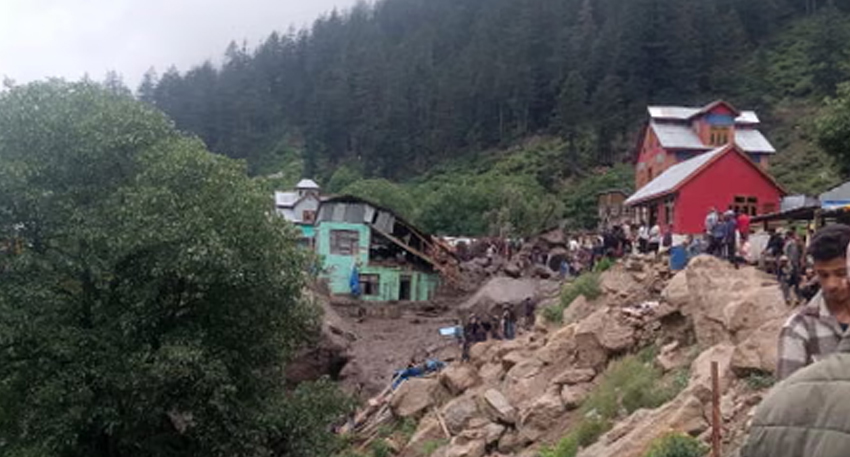
These unpredictable occurrences are becoming more frequent as the climate warms.
A Climate Call to Action:
Climate experts warn that this monsoon is a clear example of Pakistan s growing susceptibility.
The devastating 2022 floods, which uprooted millions of people and inflicted billions of dollars in losses, are quite similar to the floods that are occurring this year.
With over 7,500 glaciers in Pakistan, researchers warn that even a global temperature increase of 2°C could melt up to 65% of them within 50 years, raising future flood risks.
Without urgent investment in climate-resilient infrastructure, early warning systems, and disaster-ready planning, tragedies like these may become annual.
Impact Snapshot:
|
Region
|
Impact Highlights |
|
Khyber Pakhtunkhwa |
Hundreds killed (Buner 200+), missing persons, isolated communities |
|
Punjab & Sindh |
Submerged farmlands, infrastructure collapse, Karachi flooded, power outages |
|
Nationwide Evacuations |
150k–167k forced from homes due to heavy rain and upstream dam releases |
|
Cross-Border Strain |
Heightened Indo-Pak tensions as water releases were linked to flooding in Pakistan |
|
Climate Implications |
Glacier melt and climate change flagged as key threats for the future
|
The monsoon floods of 2025 reveal Pakistan s brittle infrastructure, inadequate disaster response, and growing climatic risks.
Thousands have been displaced and more than 800 people have died as a result of the catastrophe, which calls for immediate reforms, improved early warning systems, and sustainable planning, otherwise the destructive cycle would repeat itself every monsoon.


